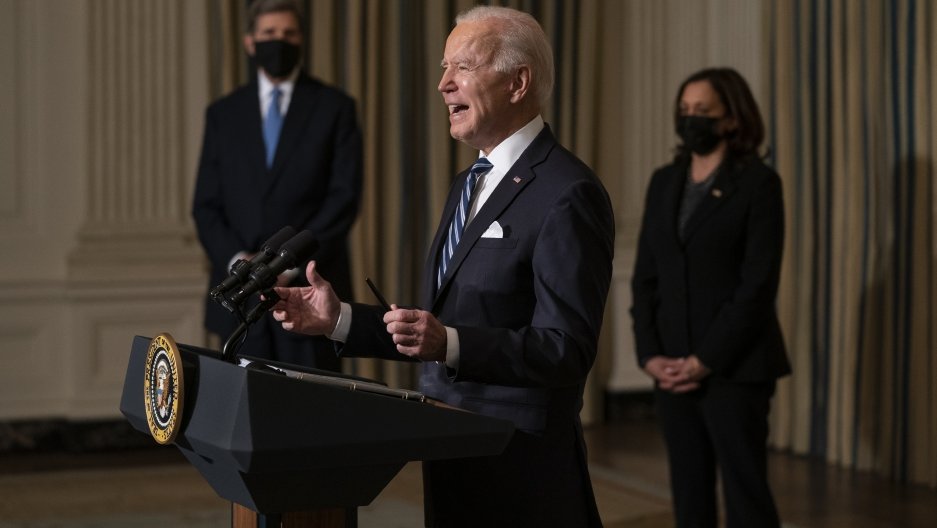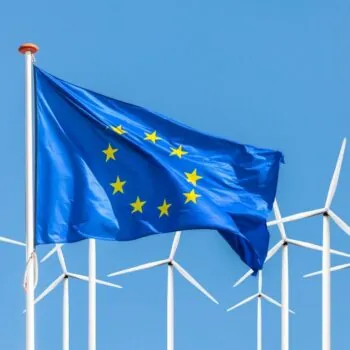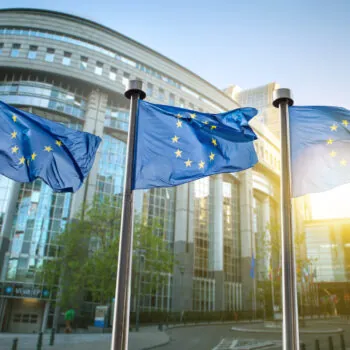E3G Senior Associate Alden Meyer appears on the podcast Living on Earth, discussing Joe Biden’s vow to take a ‘whole of government’ approach to climate change.
The Biden administration is making big and early moves to tackle the climate change crisis and show the rest of the world and major investors that the US is aggressively committed to climate action.
On Jan. 27, the White House held what it called “climate day.” With his climate team beside him, the president signed an executive order calling for “a whole of government” action plan on climate.
“To summarize this executive order, it’s about jobs, good paying union jobs. It’s about workers, building our economy back better than before. It’s a whole of government approach to put climate change at the center of our domestic, national security, and foreign policy. It’s advancing conservation, revitalizing communities and cities and farmlands and securing environmental justice.” – Joe Biden.
US Special Climate Envoy John Kerry spoke equally forcefully at a business gathering of G-20 nations. “We really have the world’s last, most important opportunity to come together, to raise ambition and to take the next step from Paris. Failure is simply not an option,” he said.
Getting buy-in from the business community will be key to making any progress toward reaching net zero emissions and forestalling the worst effects of climate change, says Alden Meyer, senior associate at the climate change think tank E3G.
“You need to have business involved and at the table if you’re going to do this,” Meyer says, “because where governments, for example, are investing tens of billions of dollars in climate finance and infrastructure investments, the private sector is investing trillions of dollars. If you don’t shift those trillions of dollars in the right direction, you’re not going to get the job done.” – Alden Meyer.
The good news, Meyer notes, is that the business community “has been deeply engaged across the world on this and, in recent years, many companies are making truly transformational commitments to get to net-zero emissions — [and] in the case of Microsoft, net-negative emissions in their supply chains and their operations, going to 100% renewable energy sourcing, etc.”
What business wants most from government is a clear, strong set of ground rules everyone can play by. “They’re pressing leaders in the G-7 [and] in the G-20 group of nations to do more, to make transformational commitments. But it’s a heavy lift,” Meyer says.
The G-20 has a summit immediately before the next big United Nations climate change talks in Glasgow, Scotland, this November. Between now and then, much needs to happen.
“The G-20 represents 20 of the largest industrial and developing nations, countries that collectively account for about 85% of global emissions,” Meyer explains. “So it’s where the emissions are, if you’re going to get something done on this. Clearly, one of the agendas here has to be getting more of the G-20 countries to commit to the net-zero emissions targets by mid-century.”
To get there, however, will require “dramatic action in the coming decade,” Meyer says. Now that the US has re-entered the Paris climate agreement, it must put forward what’s called an NDC, a nationally determined contribution, for the year 2030.
Technically, Meyer notes, this was due by the end of 2020, but “the rest of the world, obviously, will give the US a pass because of the past Trump administration, which they’re happy to see in the rear-view mirror, when it comes to climate.”
“The administration needs to consult with Congress, with governors, with mayors, with business leaders and others to make sure there’s support for the kind of proposal they put forward.” – Meyer.
This plan has to have some “political reality and robustness to it,” Meyer says. “It has to be something the world thinks the US can actually carry out. So the administration needs to consult with Congress, with governors, with mayors, with business leaders and others to make sure there’s support for the kind of proposal they put forward.”
But this will not be easy after the Trump administration’s neglect of climate goals for the past four years, Meyer notes. The US must put a “target on the table for 2030 that’s consistent with a trajectory to net-zero emissions by mid-century,” Meyer says. That means it has to aim for reductions in the 45% to 50% range.
To achieve this, the administration will have to use a mix of strategies, Meyer says: Doing everything it can with existing executive authority, through the relevant agencies — EPA, Department of Energy, departments of Interior and Transportation and others — in order to accelerate decarbonizing various sectors of the economy; coaxing Congress to go along with budget, infrastructure and stimulus proposals that make investments in these sectors.
Finally, Meyer says: “They’re going to have to work with states, cities, business leaders, investors and others that have been part of the ‘We Are Still In’ coalition during the Trump years “to deepen and broaden sub-national action on climate change, which has been the driving force for keeping us in the game over the last four years, in terms of domestic emissions.”
“So it’s a pretty complicated set of pieces they have to put together and they’re going to have to navigate the politics as they do that,” Meyer concludes.
Listen to the episode in full here.
Image credit: Evan Vucci/AP via The World.


